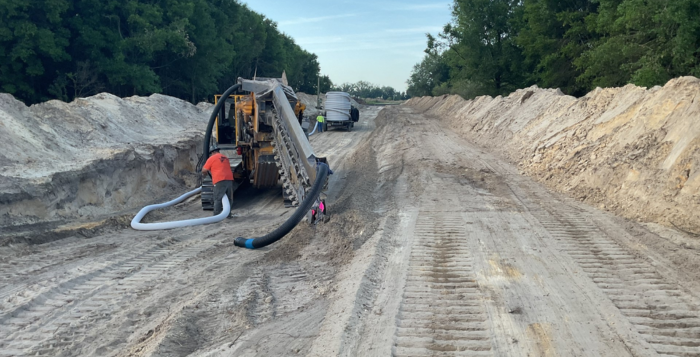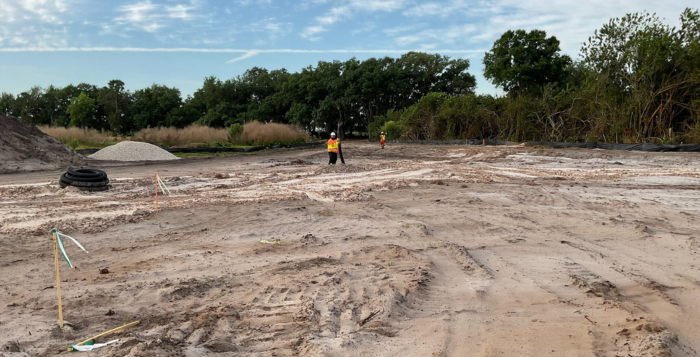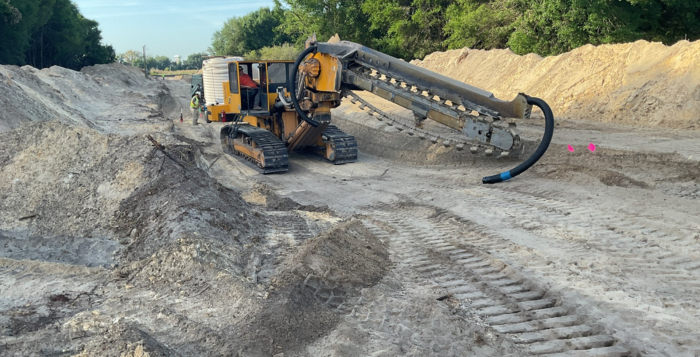Plateau Excavation
What is Dewatering?
Dewatering is the process of removing groundwater or surface water from a construction site, excavation, or structure to create a dry working environment. This method is employed to lower the water table or control groundwater levels to facilitate construction activities such as foundation excavation, tunneling, and basement construction.

Benefits of Dewatering:
- Enhanced Safety: Dewatering helps create a safer work environment by minimizing the risk of flooding, soil instability, and groundwater-related accidents, thereby ensuring the safety of workers and equipment.
- Increased Efficiency: By maintaining dry conditions at the construction site, dewatering enables construction activities to proceed smoothly and efficiently without delays caused by water-related obstacles.
- Improved Construction Quality: Controlling groundwater levels through dewatering prevents water infiltration into structures, foundations, and underground utilities, thus preserving the integrity and longevity of the built environment.
- Environmental Compliance: Dewatering plays a vital role in environmental stewardship by mitigating the impact of construction activities on nearby water bodies, wetlands, and ecosystems through proper water management and sediment control measures.

Dewatering serves several critical functions that are vital for ensuring the success and safety of construction projects:
- Ground Stability: Excessive water in the soil can compromise the stability of the ground, leading to soil erosion, slippage, and settling. Dewatering helps to stabilize the ground by reducing groundwater levels, thereby minimizing the risk of ground movement and ensuring a solid foundation for construction activities.
- Excavation and Trenching: Dewatering is essential for excavation and trenching activities, especially in areas with high water tables or near bodies of water. By lowering the groundwater level, dewatering allows excavations to remain dry, facilitating the installation of foundations, utilities, and other underground structures.
- Foundation Construction: Proper dewatering is critical during foundation construction to prevent water infiltration into the foundation materials, which could weaken the structure over time. By maintaining dry conditions, dewatering ensures that foundations can be constructed accurately and securely, enhancing the stability and longevity of the building.
- Tunneling and Underground Construction: Dewatering plays a crucial role in tunneling and underground construction projects by keeping tunnel and shaft excavations dry. This not only facilitates the construction process but also helps to prevent groundwater seepage into the tunnel, which could compromise its integrity and pose safety risks.
- Sediment and Contaminant Control: Dewatering helps to control sediment and contaminants that may be present in groundwater or surface water at the construction site. By removing water from the site, dewatering can help prevent sediment runoff into nearby water bodies, protect groundwater quality, and ensure compliance with environmental regulations.
- Access and Logistics: Dry conditions provided by dewatering enable easier access for construction equipment, materials, and personnel, facilitating efficient construction operations and logistics. Without dewatering, construction sites may become inaccessible or hazardous due to water accumulation, resulting in delays and increased costs.

Overall, dewatering is a critical process in construction that ensures the stability, safety, and efficiency of construction projects by controlling groundwater levels, maintaining dry working conditions, and mitigating environmental impacts. By implementing effective dewatering strategies, construction teams can overcome water-related challenges and achieve successful project outcomes.

